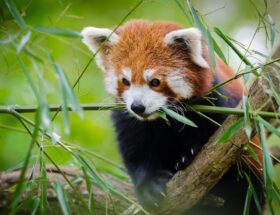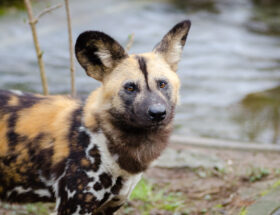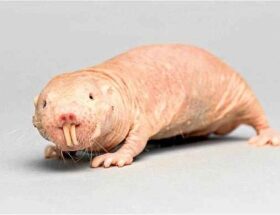I am a fashion lover, but I’m also an animal lover. I’ve often wondered, can these two passions coexist? I’ve dived into the depths of the fashion industry to uncover the truth about animal cruelty.
The fashion industry has long been associated with the exploitation of animals for clothing and accessories. From fur and exotic skins to feathers and wool, millions of animals suffer each year for the sake of fashion. However, there is a growing movement towards more ethical and animal-friendly fashion. Collective Fashion Justice and World Animal Protection have been working to raise awareness about the cruelty in the fashion industry and advocate for a more humane and sustainable approach to fashion.
Let’s explore this together and learn how we can make a difference.
Quick and Easy Navigation
Key Takeaways:
- Animal cruelty in the fashion industry is a pressing issue that needs to be addressed.
- The fashion industry’s demand for fur, exotic skins, and feathers contributes to extreme suffering and cruelty to wild animals.
- There has been progress towards fur-free fashion with some brands implementing fur-free policies and fashion weeks banning the exhibition of fur.
- Consumers play a crucial role in promoting ethical and animal-friendly fashion through their choices and support.
- Industry collaboration and policy changes are essential to bring about meaningful change in the fashion industry.
The Impact of Wild Animal Exploitation in Fashion
Wild animals are at the forefront of the fashion industry, with their fur, exotic skins, and feathers being used in clothing and accessories. This rampant exploitation of millions of wild animals each year has dire consequences for animal welfare. The fashion industry’s demand for these products perpetuates a cycle of cruelty and suffering that cannot be ignored.
From fur farming to trapping and hunting, wild animals endure immense pain and distress for the sake of fashion. Animals such as minks, foxes, and crocodiles are confined to cramped and unnatural conditions in fur farms, devoid of any semblance of a natural life. They are often subjected to inhumane treatment and cruel slaughter methods, all in the pursuit of luxury and style.
I can’t forget the down feathers industry either. Geese are frequently plucked alive, causing them extreme distress. The ordeal is repeated every six weeks, making their short lives a cycle of terror and pain.
The use of wild animal products in the fashion industry not only perpetuates animal cruelty but also contributes to the decline of biodiversity. The relentless exploitation of these animals disrupts ecosystems and threatens the survival of numerous species.
As consumers, we have the power to drive change and demand more ethical and sustainable fashion practices that prioritize animal welfare and protect our planet’s biodiversity.
The Devastating Impact of Wild Animal Exploitation
To fully comprehend the magnitude of the issue, let’s look at some staggering numbers:
This number highlight the scale of wild animal exploitation and underline the urgent need for change within the fashion industry. It is time for fashion brands and consumers alike to reject the use of animal products and embrace more ethical and sustainable alternatives.
The Path to a Compassionate Fashion Industry
Transitioning to a fashion industry that respects animal welfare requires a collective effort. Fashion brands must take responsibility for their sourcing practices, ensuring that their supply chains are free from animal exploitation. Additionally, consumers can make a significant impact by supporting cruelty-free and sustainable fashion brands, encouraging the industry to adopt more ethical practices.
By recognizing the devastating impact of wild animal exploitation in fashion and actively choosing animal-friendly alternatives, we can create a future where the beauty of fashion is not tarnished by the suffering of innocent creatures.
The Progress Towards Fur-Free Fashion
The fur industry has long been a source of controversy due to the inhumane treatment of animals. However, there has been significant progress towards fur-free fashion in recent years. Fashion brands are recognizing the ethical concerns and environmental impact of using fur, leading to a wave of fur-free policies and initiatives.
Many renowned fashion brands, including Gucci, Prada, and Versace, have made the commitment to go fur-free. These brands have recognized the importance of animal welfare and are actively exploring alternative materials and cruelty-free options. By taking a stand against fur, they are setting a new standard for the industry and inspiring others to follow suit.
The Rise of Fur-Free Fashion Brands
One of the driving forces behind the fur-free movement is the rise of fashion brands that prioritize ethical practices. These brands embrace the principles of sustainability, animal welfare, and compassion. They offer stylish alternatives that do not involve the exploitation of animals.
Consumers today are increasingly aware of the impact their fashion choices have on the environment and animal welfare. They are actively seeking out fur-free fashion brands that align with their values. As a result, fur-free fashion brands are gaining popularity and market share, further driving the industry towards a fur-free future.
| Fashion Brand | Fur-Free Policy |
|---|---|
| Gucci | Fur-free since 2018 |
| Prada | Fur-free since 2020 |
| Versace | Fur-free since 2018 |
| Stella McCartney | Fur-free since inception |
Fashion Week’s Impact
Fashion weeks around the world also play a crucial role in promoting fur-free fashion. Major fashion weeks, such as London, Los Angeles, and Helsinki, have implemented bans on the use of fur during their runway shows. This sends a powerful message to designers, industry insiders, and consumers that fur has no place in the fashion industry.
By excluding fur from their showcases, fashion weeks are shining a spotlight on ethical alternatives and encouraging designers to explore innovative materials that are cruelty-free and sustainable. This shift in industry norms is influencing the next generation of fashion designers and shaping the future of fashion.
Ethical Alternatives in the Fashion Industry
Brands are embracing vegan and animal cruelty-free materials, offering consumers stylish alternatives that prioritize animal welfare.
One key area of focus in ethical fashion is the use of synthetic fur and leather. These alternatives provide the look and feel of traditional animal-based materials without the cruelty. Plant-based fabrics, such as bamboo and hemp, are also gaining traction, offering sustainable and eco-friendly options for clothing and accessories.
Consumers are increasingly drawn to cruelty-free fashion products that align with their values. By choosing to support brands that prioritize ethical practices, individuals can make a positive impact and drive change within the industry. The demand for sustainable and animal-friendly fashion is influencing brands to adopt more ethical practices and create a market for these types of products.
The Benefits of Ethical Alternatives in Fashion
Embracing ethical alternatives in the fashion industry brings numerous benefits. Firstly, it reduces animal suffering by eliminating the need for fur, feathers, and other materials derived from animals. This shift towards cruelty-free fashion allows consumers to enjoy stylish and trendy clothing without compromising their ethical beliefs.
Secondly, sustainable and animal-friendly materials have a lower environmental impact. The production of synthetic fur and leather generates fewer greenhouse gas emissions and requires less water and land compared to traditional animal-based materials.
Lastly, the use of ethical alternatives promotes transparency and accountability within the fashion industry. Brands that prioritize animal welfare and ethical practices are more likely to engage in fair trade, ensure safe working conditions, and minimize harm to the environment.
As consumers, we have the power to support these brands and push for further change in the industry.
| Ethical Alternatives | Benefits |
|---|---|
| Synthetic fur and leather | – Eliminates animal suffering – Lower environmental impact – Transparent and accountable production |
| Plant-based fabrics (bamboo, hemp) | – Sustainable and eco-friendly – Reduces greenhouse gas emissions – Requires less water and land |
The Need for Industry-Wide Change
The unethical practices and animal abuse prevalent in the fashion industry are pressing issues that must be addressed. Animals are subjected to cruel treatment, often overlooked in the pursuit of fashion. To ensure a more ethical and compassionate industry, we need industry-wide change that prioritizes animal rights and adopts more sustainable practices.
The Reality of Unethical Practices
The fashion industry’s demand for animal products, such as fur, exotic skins, and feathers, contributes to animal abuse and suffering. Animals are trapped, bred in factory farms, and slaughtered for their materials, all for the sake of fashion. From minks and foxes confined to barren cages to crocodiles killed for their skins, the industry’s exploitation of animals is both cruel and unnecessary.
Furthermore, the rights of these animals are often disregarded, perpetuating a system that values profit over welfare. There is an urgent need for the fashion industry to recognize and address the unethical practices that exist within its supply chains.
Paving the Way for Change
To create a more ethical fashion industry, we must push for comprehensive policy changes, increased transparency, and more stringent regulations. By implementing stronger policies and regulations, we can ensure that animal cruelty is no longer tolerated and that ethical practices become the norm.
Collaboration between industry stakeholders, animal welfare organizations, and policymakers is crucial in driving meaningful change. By working together, we can advocate for the banning of wild animal products in the fashion industry and establish a framework that prioritizes animal rights and welfare.
Shifting Towards a Compassionate Future
As consumers, we hold the power to drive change. By making conscious choices and supporting brands that prioritize animal welfare and ethical practices, we can reshape the industry’s landscape. It is essential to choose cruelty-free and animal-friendly alternatives, such as vegan materials and sustainable fashion options, to create a market demand for products that align with our values.
Only through industry-wide collaboration, consumer demand, and policy changes can we pave the way for a more responsible and compassionate fashion industry.
Let us join forces to ensure that unethical practices and animal abuse in the fashion industry become a thing of the past, and together, we can build a future where animals are respected and cherished.
| Unethical Practices in the Fashion Industry | Animal Abuse in the Fashion Industry | Animal Rights in the Fashion Industry | |
|---|---|---|---|
| Awareness | Low awareness of the extent of unethical practices | Lack of acknowledgment of animal abuse as an industry issue | Erosion of animal rights due to profit-driven practices |
| Impact | Environmental degradation, cruelty to animals | Suffering, exploitation, and unnecessary killing of animals | Disregard for the rights and welfare of animals |
| Change | Comprehensive policy changes, increased transparency | Enforcement of stricter regulations, banning of unethical practices | Recognition and protection of animal rights throughout the industry |
The Connection Between Fashion and Biodiversity
The fashion industry’s exploitation of wild animals for materials such as fur, exotic skins, and feathers not only causes immense suffering to individual animals, but it also has far-reaching impacts on biodiversity. The demand for these animal products contributes to the destruction of natural habitats and threatens the survival of numerous species.
By transitioning towards more sustainable fashion practices, the industry can help protect biodiversity and preserve our ecosystems. Sustainable fashion encompasses various approaches, including the use of ethical alternatives to animal products, such as synthetic fur and leather, as well as plant-based fabrics.
The Impact of Wildlife Exploitation
Wildlife exploitation in the fashion industry leads to the destruction of habitats and ecosystems. The trapping, breeding, and slaughtering of wild animals for their fur, skins, and feathers disrupts delicate ecological balances and contributes to the decline of endangered species.
For example, the crocodile skin trade has decimated populations of these reptiles in many regions. The loss of crocodile populations not only affects the survival of these unique creatures, but it also disrupts the ecological functions they perform within their ecosystems.
Sustainable Fashion for Biodiversity Preservation
Transitioning to sustainable fashion practices is crucial for preserving biodiversity. When fashion brands prioritize the use of ethical alternatives and avoid exploiting wild animals, they reduce the demand for products that drive biodiversity destruction.
By embracing sustainable fashion, the industry can contribute to the conservation of natural habitats and the protection of endangered species. This shift towards more responsible practices is essential for safeguarding the planet’s biodiversity for future generations.
| Impact Area | Effects |
|---|---|
| Habitat Destruction | Loss of natural habitats due to wildlife exploitation |
| Species Decline | Threat to endangered species through hunting and trapping |
| Ecosystem Disruption | Disturbance of ecological balances and functions |
The Role of Consumers in Promoting Change For Animal Welfare in Fashion Industry
As a conscious consumer, I firmly believe that our fashion choices have the power to shape the industry and drive positive change in animal welfare. By making informed decisions and supporting brands that prioritize ethical fashion, we can send a clear message that cruelty-free clothing is the only acceptable choice. Our collective demand for animal-friendly fashion can push the industry to adopt more sustainable and compassionate practices.
One way consumers can promote change is by choosing to buy cruelty-free clothing. This means opting for products that do not harm animals in any way, from the sourcing of materials to the manufacturing process. Look for certifications like the PETA-approved vegan logo or seek out brands that have publicly committed to being 100% fur-free. By consciously selecting these items, we can create a market demand for ethical fashion and incentivize brands to prioritize animal welfare.
Empowering Consumer Choices
To make informed choices, it’s essential to educate ourselves about the different aspects of ethical fashion. This includes understanding the impact of animal materials, such as fur, leather, and wool, as well as the alternatives available. Thankfully, there is now a wide range of innovative and sustainable materials that can be used in fashion, from recycled polyester to mushroom leather. By looking beyond traditional animal-based materials, we can support brands that embrace cruelty-free alternatives.
Another way consumers can promote change is by engaging with brands and advocating for animal welfare. Reach out to fashion companies through social media, email, or even letters to express your concerns and ask about their ethical practices. By raising our voices collectively, we can encourage transparency and accountability within the industry.
Additionally, consider supporting organizations that work to promote animal welfare in fashion, as they play a vital role in advocating for policy changes and pushing for industry-wide improvements.
| Benefits of Conscious Consumerism | Impact on Animal Welfare | Impact on Fashion Industry |
|---|---|---|
| Encourages brands to adopt ethical practices | Reduces demand for animal-based materials | Drives market demand for sustainable and cruelty-free fashion |
| Creates a market for animal-friendly fashion | Raises awareness about animal welfare issues | Pushes industry to prioritize animal welfare |
| Supports brands that prioritize animal welfare | Helps protect animals from harm and exploitation | Encourages industry-wide change towards ethical practices |
Ultimately, the role of consumers in promoting change in the fashion industry cannot be understated. By making conscious choices, advocating for animal welfare, and supporting brands that prioritize ethical fashion, we can drive the industry towards a more compassionate and sustainable future. Together, let’s use our fashion choices as a powerful tool for positive change and show that cruelty has no place in our closets.
Fashion Industry Sustainability: Collaborating for Change to End Animal Cruelty
The fashion industry has a significant impact on the environment and animal welfare, but there is growing momentum towards sustainability and ethical practices. Collaboration between industry stakeholders, animal welfare organizations, and policymakers is crucial to drive meaningful change and create a more responsible fashion industry.
Collective Fashion Justice and World Animal Protection
Organizations like Collective Fashion Justice and World Animal Protection are at the forefront of advocating for policy changes that prioritize animal welfare and ban the use of wild animal products in the fashion industry. By working together, they aim to create comprehensive policies and regulations that ensure animal cruelty is no longer tolerated.
Fashion Industry Policies
Achieving fashion industry sustainability requires the implementation of clear and enforceable policies. These policies should address issues such as the use of fur, exotic skins, and feathers, as well as the treatment of animals in factory farms. By establishing strict guidelines and holding fashion brands accountable, we can create an industry that respects and protects animal welfare.
Bans on Wild Animal Products
To combat the exploitation of wild animals in the fashion industry, it is essential to introduce bans on the use of their products. This includes fur, exotic skins, and feathers sourced from unsustainable and inhumane practices. By prohibiting the use of these materials, we can promote a shift towards more ethical and sustainable alternatives.
| Fashion Industry Sustainability | |
|---|---|
| Fashion Justice and World Animal Protection | Advocating for policy changes |
| Fashion Industry Policies | Establishing guidelines and accountability |
| Bans on Wild Animal Products | Prohibiting unsustainable practices |
Conclusion
In conclusion, the fashion industry has long been plagued by animal cruelty, but there is hope for a more compassionate future. The growing movement towards ethical fashion and animal welfare is gaining momentum, thanks to the combined efforts of organizations like Collective Fashion Justice and World Animal Protection.
By raising awareness about the horrors of the fashion industry and advocating for more humane and sustainable practices, these organizations are driving industry-wide change. They have successfully pushed for fur-free policies, bans on wild animal products, and the promotion of ethical alternatives.
However, there is still much work to be done. Unethical practices and animal abuse continue to persist within the fashion industry, and the rights of animals are often overlooked. It is crucial for consumers to play an active role in promoting change by making conscious fashion choices and supporting brands that prioritize animal welfare.
Together, through industry collaboration, consumer demand, and policy changes, we can create a fashion industry that respects and protects the well-being of animals. Let us embrace ethical fashion and show that cruelty has no place in our wardrobes. Together, we can build a more responsible and compassionate fashion industry.









